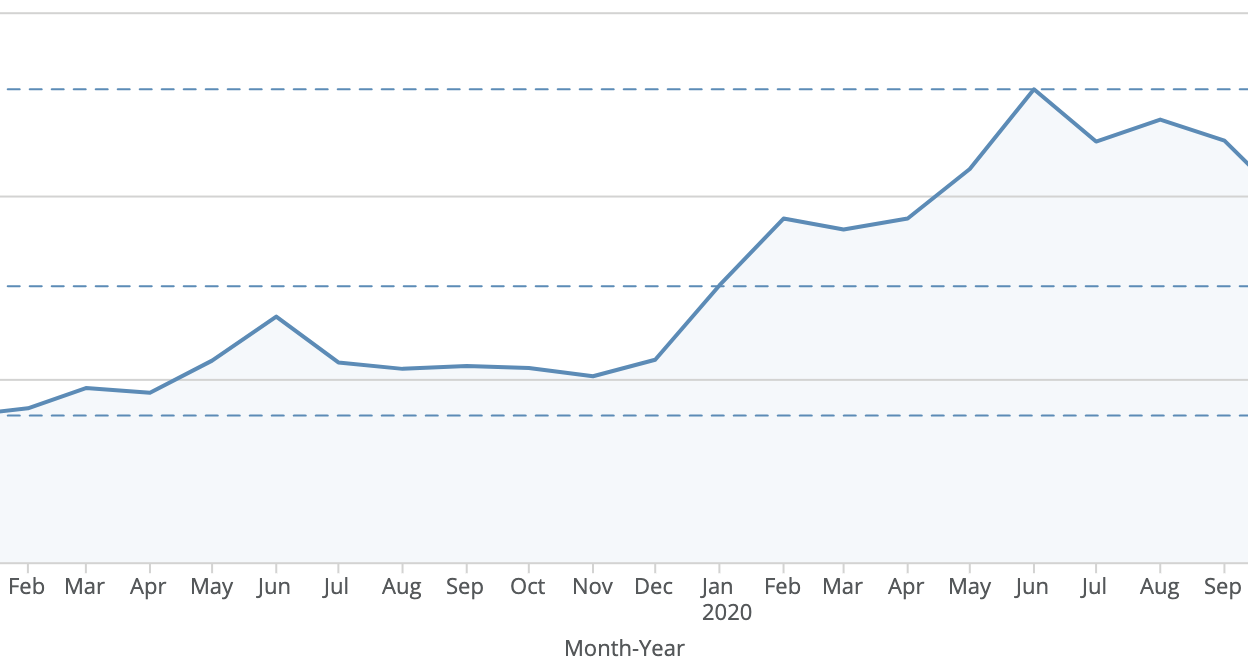Los servicios financieros ya no son ofrecidos solo por empresas de servicios financieros. Hay algunas maneras en las que los bancos están expandiendo su alcance al abrir sus sistemas a terceros a través de APIs de datos financieros. El auge de la banca como servicio (BaaS) ha permitido que casi cualquier empresa amplíe sus ofertas para incluir productos financieros, pero hay algunas formas impulsadas por API en las que los bancos se están conectando con terceros.
Cómo las APIs están conectando a los bancos con terceros
Existen tres tipos principales de conexión impulsada por API entre bancos y terceros:
- Banca abierta: Conexión impulsada por regulación en la que los bancos tienen APIs "abiertas" para que proveedores terceros aprobados (TPPs) se conecten a los datos de los bancos
- BaaS: Los bancos conectan sus productos y servicios financieros a terceros a través de una API; los terceros (fintechs y empresas que operan fuera del sector financiero) utilizan la API para integrar servicios bancarios en su producto
- Banca de plataforma: Los bancos integran aplicaciones fintech con sus propios productos a través de APIs
¿Qué está impulsando la conexión?
- Regulaciones (regulación de banca abierta impulsada por PSD2)
- Reducción de los costos de cambio para los clientes
- Enorme afluencia de financiamiento fintech
- Base de clientes cada vez más digital
Los bancos no están abriendo sus puertas y regalando partes de su cuota de mercado porque de repente se hayan convertido en empresas altruistas. Se ven obligados a interactuar con sus competidores por desarrollos naturales del mercado y reguladores que buscan aumentar la competencia. Una base de clientes cada vez más digital, o exclusivamente digital, está buscando fuera de la industria bancaria tradicional para satisfacer sus necesidades de servicios financieros. Los costos de cambio son más bajos que nunca para los clientes en el ámbito digital, y la facilidad con la que pueden usar múltiples productos financieros de múltiples proveedores significa más dificultades para los incumbentes que buscan retener a sus clientes. Un aumento constante en el financiamiento fintech también ha puesto presión sobre los incumbentes para innovar y forjar asociaciones para llegar a sus clientes digitales donde viven sus vidas financieras.
La crisis del COVID-19 ha acelerado la tasa de transformación digital dentro del sector bancario en particular y ha obligado a los bancos a centrarse en su presencia digital y su línea de productos, o buscar asociaciones con empresas que son nativas digitales. En G2, vimos un aumento del 133% en el tráfico a la categoría de APIs de datos financieros desde diciembre de 2019 hasta julio de 2020.
 Tráfico de G2 a la categoría de APIs de datos financieros
Tráfico de G2 a la categoría de APIs de datos financieros
Nuevas regulaciones, como PSD2 en Europa, han ordenado que los bancos abran sus conjuntos de datos a través de APIs. El objetivo de la regulación es fomentar la competencia dentro de la industria bancaria permitiendo que las fintechs desarrollen aplicaciones que satisfagan las necesidades del consumidor, según lo determinado por los conjuntos de datos del consumidor en los que se basa el desarrollo de aplicaciones.
Si bien la banca abierta no se ha legislado en los EE. UU., los bancos estadounidenses todavía están abriendo sus sistemas a terceros (típicamente agregadores de datos financieros, fintechs) a través de APIs. Hacen esto para mantenerse frente a una base de clientes más amplia. Sí, pierden la mayor parte de los ingresos a favor del proveedor cuya aplicación está utilizando el cliente, pero se mantienen frente a un consumidor cada vez más digital que valora la conveniencia por encima de la mayoría de las cosas.
Los agregadores de datos financieros son algunos de los jugadores más visibles en la industria de conexión de datos bancarios. Los agregadores de datos, como Plaid, venden acceso a datos bancarios a fintechs y desarrolladores. En los EE. UU., a diferencia de Europa, los reguladores no han ordenado a los bancos que abran sus conjuntos de datos, por lo que los bancos dependen de los agregadores de datos para proporcionar conexión a las fintechs a través de un acceso fácil y organizado a los datos del consumidor.
El riesgo para los incumbentes es que pueden terminar siendo utilizados por su licencia bancaria y quedarse muy atrás de sus primos innovadores en el mundo fintech, cuyas aplicaciones ofrecen una interfaz de usuario/experiencia de usuario (UI/UX) intuitiva y valiosos conocimientos basados en los datos de los clientes de los incumbentes. Sin embargo, la inmensa dificultad inherente al proceso de obtener una licencia bancaria protege a los bancos e instituciones financieras tradicionales. Aunque Square recientemente obtuvo una licencia bancaria, al igual que Varo, y otras fintechs pueden optar por seguir el mismo camino, la realidad es que sigue siendo bastante difícil obtener la aprobación para una licencia bancaria.
Dado el aumento de riesgo en operar como banco y la dificultad de convertirse en uno, una estrategia que refleje la expansión de Google en servicios bancarios a través de sus bancos asociados probablemente seguirá siendo el estándar. El foso competitivo para los bancos sigue siendo amplio, y estas asociaciones entre instituciones financieras y agregadores de datos financieros son mutuamente beneficiosas. Los bancos obtienen acceso a la infraestructura digital necesaria para mantener y aumentar su base de clientes sin tener que desarrollar una versión peor por sí mismos. Sus socios obtienen la oportunidad de expandirse en servicios financieros sin pasar por el tortuoso proceso de solicitar una licencia bancaria.
Riesgos y preguntas sobre el nuevo mundo bancario conectado
Estas nuevas conexiones con terceros—empresas tecnológicas o agregadores de datos financieros—traen un aumento del riesgo para los bancos. Algunos bancos (JPMorgan Chase y Wells Fargo siendo dos ejemplos prominentes) están firmando acuerdos con agregadores de datos financieros como Plaid para protegerse del aumento del riesgo. Estos acuerdos trasladan el riesgo al agregador, limitan la recolección de datos a APIs en lugar de scraping de pantalla, y dan a los clientes total transparencia y control sobre qué datos están siendo accedidos.
Sin embargo, actualmente, hay un mosaico de diferentes acuerdos y una clara falta de estándares cuando se trata de prácticas de intercambio de datos. Se están tomando medidas para estandarizar estos acuerdos porque el enfoque de API es prolífico pero seguirá siendo el enfoque para la conexión de datos en el futuro. Grupos como el Financial Data Exchange (FDI)—una organización sin fines de lucro que consiste en grandes bancos, agregadores de datos y fintechs—están trabajando en marcos que prometen estandarizar, regular y controlar el acceso sin precedentes a los datos que ha sido impulsado por la evolución del sistema financiero.
La llegada de APIs en el mundo de los servicios financieros plantea una pregunta interesante sobre la propiedad y protección de los datos. Se han planteado y debatido preguntas similares en el sector de la salud. ¿Quién es el dueño de los datos del cliente? Ha habido impulsos para la propiedad del consumidor de sus propios datos, con las empresas a las que confían los datos actuando como administradores. Con la administración viene un cierto deber de cuidado. Actualmente, los clientes deben sopesar su deseo de conveniencia contra las preocupaciones sobre dónde se almacenan sus datos, cómo y a quién se comparten sus datos, y cuán seguros están. La responsabilidad recae en los reguladores para asegurar que la privacidad de los datos y la seguridad del cliente estén integradas en los estándares que se están estableciendo para las conexiones de los bancos con terceros. El scraping de pantalla está convirtiéndose lenta pero seguramente en una reliquia de una era pasada, con buena razón, pero las conexiones con terceros significan una superficie de ataque aumentada que necesita ser abordada.
El futuro de la banca
Los servicios financieros continuarán convirtiéndose en una industria cada vez más digital con conexiones significativas impulsadas por API a fintechs y otras empresas tecnológicas. Estos terceros aprovecharán ya sea la licencia bancaria o los datos del cliente de los incumbentes para producir productos, proporcionar a los clientes conocimientos basados en datos y ofrecer servicios financieros donde antes no podían. A cambio, los bancos pueden usar la infraestructura digital de sus socios para llegar a más clientes y mantenerse relevantes en una era donde los costos de cambio para los servicios financieros son bastante bajos y los clientes tienen más opciones que nunca.
En resumen, el panorama continuará evolucionando drásticamente, y los bancos que no se adapten al entorno cambiante lucharán por sobrevivir.
| Leer más: La importancia de las fintech en un mundo remoto → |
¿Quieres aprender más sobre APIs de Datos Financieros? Explora los productos de APIs de Datos Financieros.

Patrick Szakiel
Patrick is a Senior Market Research Manager and Senior Analyst (Fintech and Legaltech) at G2. Prior to G2, he worked in a variety of roles, from sales to marketing to teaching, but he enjoys the opportunity to constantly learn and grow that the tech industry provides. Outside of work, Patrick enjoys reading, writing, traveling, jiu-jitsu, playing guitar, and hiking.
